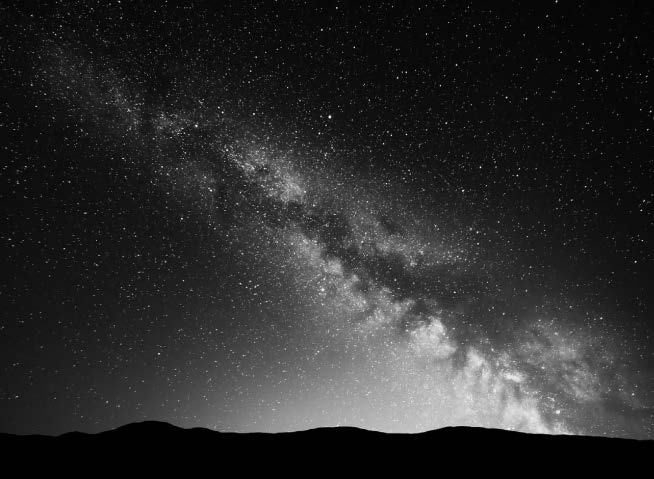ASTRONOMY
6. Astronomers have identified more than a dozen black holes in the Milky Way galaxy.

FOR ADVANCED OBSERVERS
1. What best describes the current rate of the expansion of the universe? a. The expansion of the universe is slowing down (decelerating). b. The expansion of the universe is speeding up (accelerating). c. The expansion of the universe is constant (neither decelerating or accelerating). d. The universe is not currently expanding.
2. Approximately what percent of the universe is composed of normal matter, the kind found in atoms, stars, planets, asteroids, humans, and this Almanac? a. 100 percent b. 75 percent c. 50 percent d. 5 percent
3. You are an alien observer who has installed spy telescopes on the Sun's equator to watch Earth. During your surveillance, what do you notice about Earth's Moon? a. The Moon is always in the full phase and never disappears behind Earth. b. The Moon goes through a full set of phases and disappears behind Earth about twice a year. c. The Moon is always in the full phase and disappears behind Earth about twice a year. d. The Moon goes through a full set of phases and disappears behind Earth about once a month.
True or False? 4. If astronauts ever land on Mars, it will be possible to have a real-time conversation with them, with a transmission delay of only a few seconds.
5. The solar system orbits the center of the Milky Way galaxy.
6. In about 4 billion years, the Milky Way galaxy and the Andromeda Galaxy will collide and combine to form a new galaxy.
ANSWERS TO "TEST YOUR SKY-Q"
Beginner 1. b. Planets are visible because they reflect sunlight. Uranus and Neptune are very far away—and thus very dim. You will always need a telescope to see Neptune, but if you know exactly where to